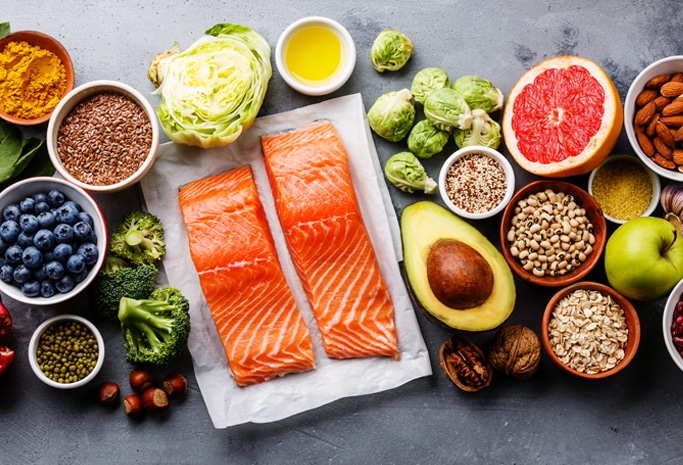If you have been told by your doctor that you have diabetes or prediabetes, or even if you are just concerned about developing diabetes in the future, you should think about your diet as a key element in keeping your blood sugar level. (The complications from diabetes are serious and numerous; you can learn more about that here). Unfortunately, there are no foods that actually lower your blood sugar, but there are foods that do not spike your blood sugar quickly. Think about high fiber foods, carbohydrates that do not come from refined sugars, and carbohydrates that are slowly digested by your body, like those that come from vegetables and whole grains.
What is the Glycemic Index?
The glycemic index is a number given to foods to indicate how fast they will affect the glucose level in your blood (on a scale from 1 to 100). Dr. David Jenkins developed the glycemic index at the University of Toronto in 1981.5 Dr. Jenkins was conducting research on how people with Type 1 diabetes can control blood sugar, and that led him to understanding more about the role of carbohydrates in blood glucose levels. When you eat, your body converts the food to energy for the body, and one of those conversions is to provide sugar to the body. Foods that convert to sugar more slowly provide a more continuous source of energy, without the spikes in blood sugar that can lead to a “crash”, causing low energy and lethargy. The list below is incomplete, but it can help you start thinking about foods that that provide slow and steady energy to the body. Harvard has a longer list of foods and their glycemic index at this link2.
Foods that do not spike your blood sugar:
- Avocados
- Fish
- Whole Grains
- Garlic
- Apples and other high fiber fruits
- Oatmeal
- Sweet Potatoes
- Leafy Green Vegetables
- Nuts
- Eggs
- Berries
- Legumes, lentils and other beans
- Carrots and other high fiber vegetables
- Green Tea and Coffee
- Cinnamon
- Flaxseed and Chia seeds
- Yogurt and Skim milk
Foods Without a Glycemic Index Number
Foods that have few or no carbohydrates do not have a glycemic index value. The glycemic index refers only to foods with carbohydrates, so meat, chicken, pork, and eggs are examples of foods that do not have a glycemic index.
About Type 2 Diabetes
Diabetes is growing significantly in the United States, with the Centers for Disease Control (CDC) stating that 9.4% of the country’s population (30 million people) has diabetes. Another 84 million have prediabetes, which can lead to full blown diabetes within 5 years if not treated.3
Diabetes can be silent, developing without any symptoms or indications that it is damaging the body’s organs. The complications from diabetes are numerous. Having diabetes puts one at significantly higher risk for heart disease and stroke. Diabetic retinopathy is a leading cause of blindness. Circulation problems in the legs can develop because of diabetes, and in the worst instances, can lead to tissue death requiring amputation. Diabetes can also damage the nerves (called neuropathy), causing tingling, numbness, and burning pain in the hands and feet. Diabetes also damages the filtering system in the kidneys, leading to kidney disease that could require dialysis or a kidney transplant. Symptoms of depression are more common in people with diabetes, which can affect diabetes management.
Treatment for diabetes may include insulin, medications to stimulate insulin production in the pancreas, weight loss, and increased activity. People with diabetes are required to monitor their blood glucose levels several times a day.4 Recent research also shows that patient education about diabetes, what causes it, and how to manage it, results in better outcomes.4 This could include seeking the help of a nutritionist or physical trainer. The new research also recommends that doctors manage the risk for heart disease caused by diabetes, especially if glucose targets are not being met consistently. Patients with a BMI of 40+ may also be referred for weight loss surgery, as this has shown to be effective in controlling and sometimes even eradicating diabetes.
